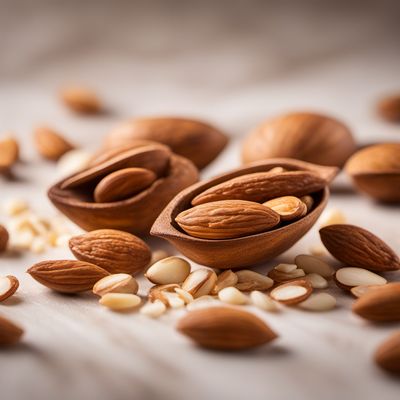
Ingredient
Anise extract
The Aromatic Elixir: Unveiling the Delights of Anise Extract
Anise extract is derived from the seeds of the anise plant, known for its delicate and sweet fragrance. It is a clear, amber-colored liquid with a strong licorice aroma. The taste of anise extract is warm, sweet, and slightly spicy, reminiscent of black licorice. Its texture is smooth and syrupy, allowing for easy incorporation into recipes. A little goes a long way in terms of flavor, so it is important to use it sparingly to avoid overpowering the dish.
Origins and history
Anise extract has a rich history dating back to ancient civilizations. It is believed to have originated in the Mediterranean region and was highly valued by the Egyptians, Greeks, and Romans for its medicinal and culinary properties. Anise seeds were used in traditional remedies for digestive issues and as a breath freshener. Over time, anise extract became a popular ingredient in various cuisines around the world, including Mediterranean, Middle Eastern, and Asian cuisines.
Nutritional information
Anise extract is low in calories and fat. It contains essential minerals such as iron, calcium, and magnesium. Additionally, it is a good source of antioxidants and has been associated with potential digestive benefits.
Allergens
Anise extract may cause allergic reactions in individuals with known allergies to plants in the Apiaceae family, such as celery, carrots, and parsley.
How to select
When selecting anise extract, opt for reputable brands that use high-quality anise seeds. Look for a clear and well-sealed bottle to ensure freshness. Check the expiration date to ensure optimal flavor.
Storage recommendations
To maintain the freshness and quality of anise extract, store it in a cool, dark place away from direct sunlight. Ensure the bottle is tightly sealed to prevent evaporation and contamination. Properly stored, anise extract can retain its flavor for up to two years.
How to produce
An amateur can produce anise extract by soaking crushed anise seeds in a high-proof alcohol, such as vodka or rum, for several weeks. The mixture should be stored in a cool, dark place and shaken occasionally. After the desired infusion period, the liquid can be strained and used as anise extract.
Preparation tips
Anise extract is commonly used in baking, particularly in recipes for cookies, cakes, and pastries. It pairs well with fruits like apples, pears, and oranges. It can also be added to beverages such as teas, cocktails, and hot chocolate for a unique twist. When using anise extract, start with a small amount and adjust according to taste preference. Remember that its flavor can be intense, so a little goes a long way.
Substitutions
If anise extract is not available, a suitable substitute can be fennel extract or ground fennel seeds. Both have a similar licorice-like flavor that can complement recipes in a similar manner.
Culinary uses
Anise extract is commonly used in baking, particularly in recipes for biscotti, pizzelle, and anise-flavored breads. It is also a key ingredient in traditional liqueurs such as absinthe, ouzo, and sambuca. Additionally, anise extract can be used to enhance the flavor of savory dishes like roasted meats, stews, and marinades.
Availability
Anise extract is commonly available in grocery stores, specialty food stores, and online retailers worldwide.
More ingredients from this category

Lemon essence
The Essence of Citrus: Lemon Essence and its Intense Flavor

Almond essence
The Essence of Almonds

Rum essence
The Essence of Caribbean Spirit

Orange essence
The Essence of Citrus: Unlocking the Aromatic Delights of Orange Essence

Vanilla essence
The Aromatic Elixir: Unveiling the Magic of Vanilla Essence

Liquorice extract
The Sweet and Earthy Allure of Liquorice Extract